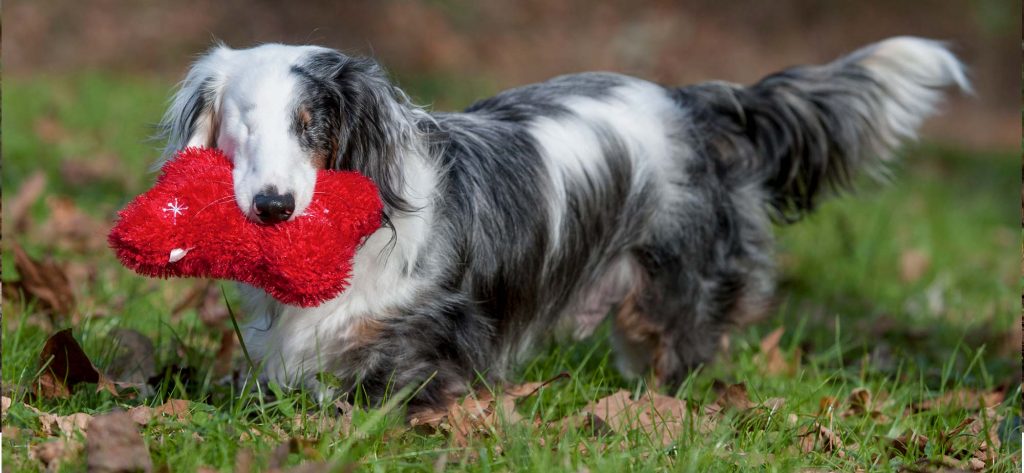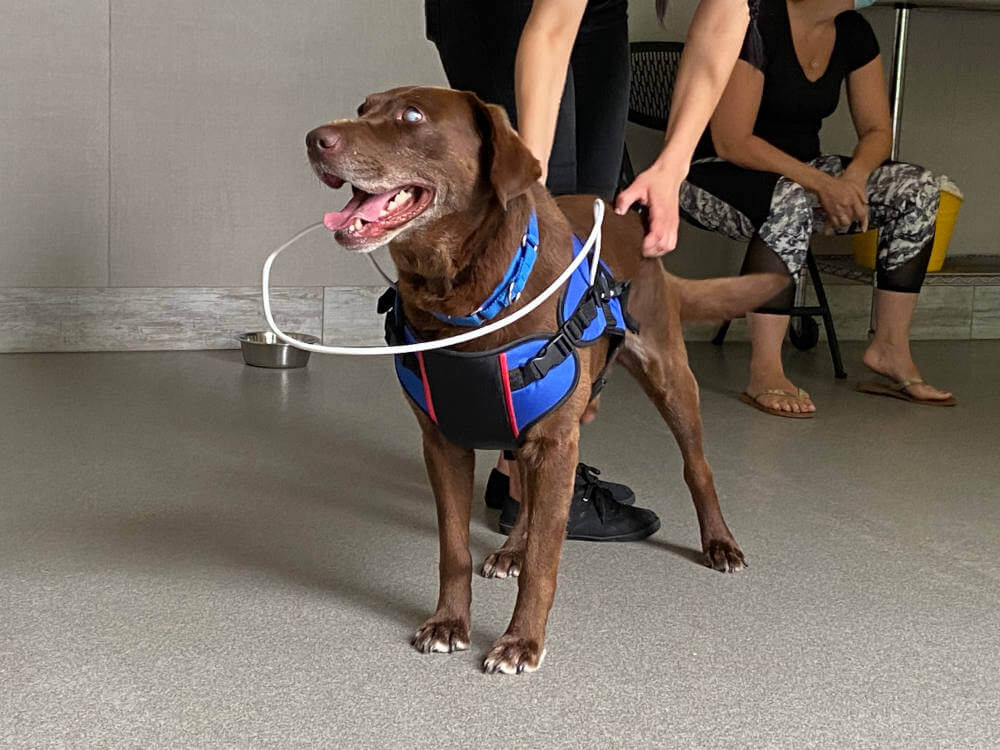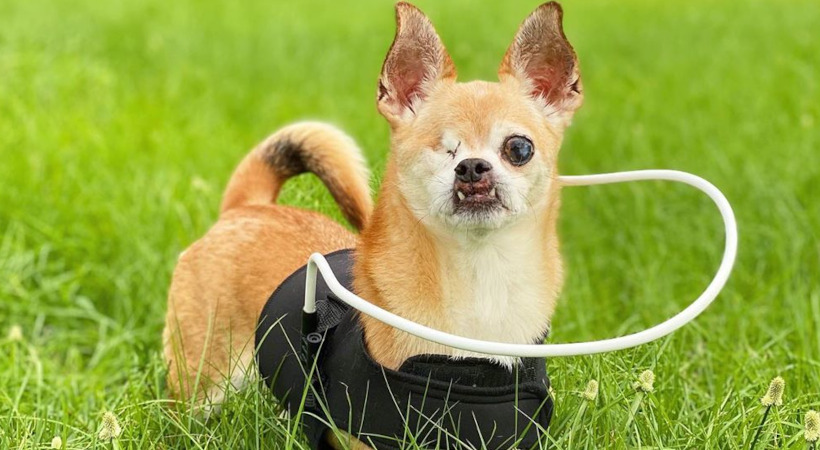The bond between humans and dogs is an age-old testament to the enduring power of love and companionship. In the United States alone, approximately 86.9 million households have embraced the joy of dog ownership, welcoming these furry friends into their lives as cherished family members. With a diverse array of dog breeds, each one brings its unique charm and quirks, enriching lives in countless ways.
However, amid the diverse world of dogs, some find themselves facing unique challenges. Caring for a blind dog requires a special kind of devotion and understanding. Providing the right care and attention is essential to ensuring their well-being and happiness.
This guide will explore the world of blind dogs and the importance of offering them specialized care. While it may seem daunting at first, the journey of caring for a blind dog comes with unparalleled rewards as they become loving companions, reminding the beauty of unconditional love and resilience.
Understanding Blindness in Dogs

Blindness in dogs can result from various causes, such as cataracts, glaucoma, or progressive retinal atrophy. Aging dogs are more susceptible, but genetic factors may also contribute. Blindness significantly impacts a dog’s behavior and daily life, causing them to rely on their other senses and adapt to their surroundings. They may become hesitant or anxious in unfamiliar environments.
According to research, more than 300,000 dogs experience blindness, with certain breeds having higher prevalence rates. Understanding the challenges blind dogs face provides the specialized care they need, fostering a loving and supportive environment to help them thrive.
Creating a Safe Environment
Creating a safe environment is crucial for a blind dog’s well-being. Remove potential hazards and keep furniture arrangements consistent to aid their navigation. Use scent markers and sound cues to guide them through the house and mark important areas. Training them to respond to specific commands enhances their confidence. With patience and love, blind dogs can adapt remarkably well.
Many heartwarming success stories showcase their resilience and ability to thrive in a secure environment, proving that a little extra care and attention can make a world of difference in their lives.
Training and Communication
Training and communication play a vital role in nurturing a strong bond with a blind dog. Verbal cues, touch, and consistency become essential means of communication. Positive reinforcement techniques, like treats and praise, prove effective in teaching blind dogs new commands and behaviors. Their incredible resilience shines through as they eagerly embrace these training challenges, adapting and learning to navigate the world confidently.
By understanding their unique needs and employing patient and encouraging training methods, you can unlock their full potential, proving that blind dogs are capable of remarkable accomplishments and forging even deeper connections with their human companions.
Exercise and Playtime

Regular exercise is vital for a blind dog’s overall well-being. Engaging in physical activities not only keeps them physically fit but also stimulates their mental faculties. Indoor games like scent training and puzzle toys enhance their cognitive abilities. Outdoor activities like leash walks in familiar areas offer sensory experiences and build their confidence.
Studies show that exercise positively impacts blind dogs, reducing anxiety and promoting a happier disposition. By incorporating exercise into their daily routine, you can empower blind dogs to lead fulfilling lives full of joy and thrive despite their visual challenges.
Nutrition and Dietary Considerations
Proper nutrition is crucial for the well-being of blind dogs. Specially formulated diets cater to their unique needs, considering factors like weight management and potential sensitivities. Adding supplements like omega-3 fatty acids may support their cognitive function and joint health. Studies highlight the significant impact of nutrition on a blind dog’s overall health, showcasing improvements in immune function, skin health, and energy levels.
Veterinary Care and Regular Checkups
Regular veterinary checkups are crucial for ensuring the well-being of blind dogs. Routine examinations help detect any health issues early, enabling timely intervention. Blind dogs may be more susceptible to certain conditions, such as ear infections or joint problems, so preventive measures are essential. Vaccinations and dental care play a significant role in maintaining their overall health.
With proper veterinary attention and preventive care, many blind dogs live long and thriving lives. Their resilience and ability to adapt, combined with attentive medical support, demonstrate that with love and proper care, blind dogs can enjoy a fulfilling and healthy life.
Socialization and Interaction
Socialization is key to building blind dogs’ confidence and enriching their lives. Gradually expose them to new environments and people, using positive reinforcement to create positive associations. Encourage gentle interactions with other pets to foster companionship and reduce anxiety.
Heartwarming stories abound of blind dogs forming strong bonds with humans and fellow pets , showcasing their remarkable ability to trust and love unconditionally. Through patient and nurturing socialization, blind dogs can embrace the world around them, forging meaningful connections that enhance their happiness and overall well-being.
Addressing Anxiety and Fear

Addressing anxiety and fear in blind dogs requires understanding their unique needs. Provide a secure environment with consistent routines, reducing uncertainty. Companionship plays a crucial role, offering emotional support and comfort. Studies highlight the positive impact of social interactions and human presence in reducing stress and anxiety in blind dogs. Calming aids, like soothing scents or soft music, can also be beneficial.
Specialized Products and Resources
Discover a range of specialized products tailored for blind dogs, including innovative harnesses, interactive toys, and sensory aids. These products aim to enhance their daily experiences, foster independence, and improve their overall quality of life.
Reputable websites like Paw Leaks offer a wide selection of these valuable resources. With the right assistive devices, blind dogs can navigate their world more confidently, allowing them to embrace each day with joy and enthusiasm, proving that a little extra support can make a world of difference for our furry companions.
Success Stories and Testimonials
From overcoming challenges to embracing life with boundless joy, numerous heartwarming success stories feature blind dogs thriving with proper care. Testimonials such as Lucy’s story recount the transformative power of love and dedication in nurturing these remarkable companions. They describe the profound connections forged with their blind dogs, proving that these extraordinary beings offer endless love and loyalty.
Such stories inspire hope and encouragement for those considering adopting a blind dog, assuring them that with compassion and commitment, they can create a beautiful bond that will enrich both their lives and the lives of these exceptional animals.
Caring for a blind dog requires specialized attention and patience. Creating a safe environment, implementing positive reinforcement training, and offering proper nutrition are key strategies for their well-being. The rewarding experience of providing love and care to a blind dog fosters a profound and unbreakable bond, making the journey of caring for a visually impaired furry friend one filled with boundless joy and cherished memories. Embrace the challenges and rewards, and embark on this unique adventure of compassion and devotion with a blind dog by your side.





